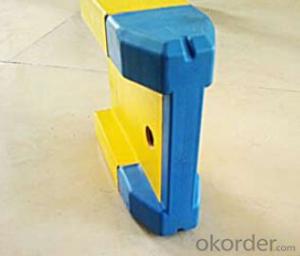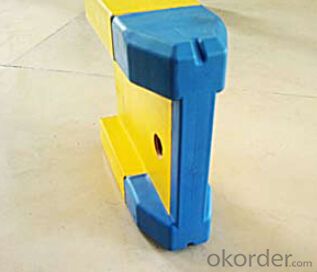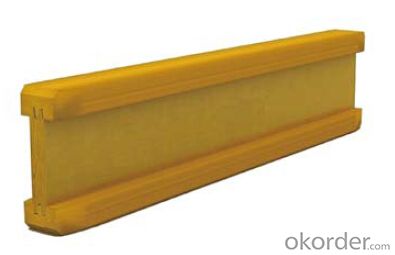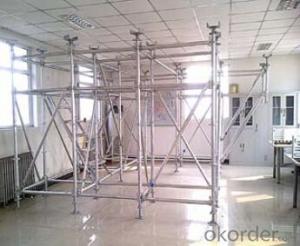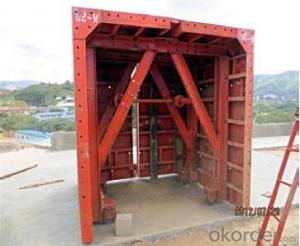Timber-beam Formwork for building construction
- Loading Port:
- Tianjin
- Payment Terms:
- TT OR LC
- Min Order Qty:
- 50 m²
- Supply Capability:
- 1000 m²/month
OKorder Service Pledge
Quality Product, Order Online Tracking, Timely Delivery
OKorder Financial Service
Credit Rating, Credit Services, Credit Purchasing
You Might Also Like
Characteristics:
◆ Standardized production lines.
Supply capability: 3000m/day, Lmax = 6600mm.
◆ Finger jointing of the flange and web, the strength of timber beam is highly improved.
Max. shearing force failure load:40KN
◆ Well treated to prevent from water penetration or erosion, so the service life maximally
extended.
Normally, CNBM timber beam H20 can be used for 4 to 5 years, the exact using time would
depend on maintenance & storage.
◆ Robust caps at the end of the girders protect against damages.
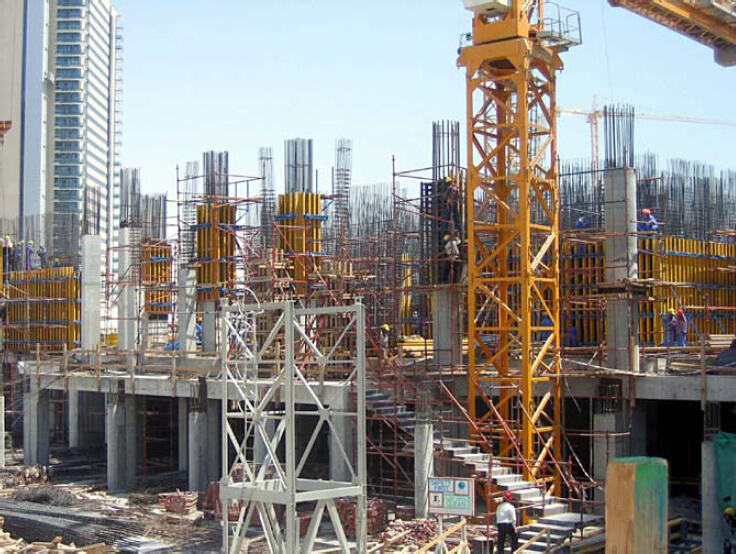
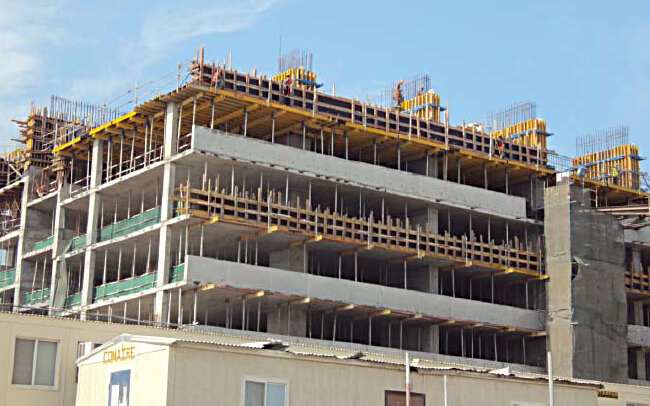
- Q: Can steel formwork be used for both standard and non-standard concrete shapes?
- Yes, steel formwork can be used for both standard and non-standard concrete shapes. Steel is a versatile material that can be easily molded and shaped to create various formwork designs. It offers high strength and durability, making it suitable for complex and intricate concrete shapes. Steel formwork can be fabricated to meet specific project requirements, allowing for customization and flexibility in formwork design. Whether it is a standard rectangular shape or a unique and irregular design, steel formwork can be used effectively to mold and shape concrete structures of any shape and size.
- Q: Is steel formwork suitable for projects with high concrete pressure?
- Yes, steel formwork is suitable for projects with high concrete pressure. Steel formwork is known for its strength and durability, making it capable of withstanding the pressure exerted by the wet concrete during the pouring and curing process. It can handle the weight and pressure of the concrete without deforming or collapsing, ensuring the stability and integrity of the structure being built. Steel formwork also provides a smooth and consistent surface finish to the concrete, which is essential for projects that require high-quality finishes. Additionally, steel formwork can be reused multiple times, making it a cost-effective option for projects with high concrete pressure.
- Q: What are the disadvantages of using steel formwork?
- One disadvantage of using steel formwork is its relatively high cost compared to other types of formwork materials. Additionally, steel formwork is heavy and requires special equipment for handling and installation, making it less convenient to transport and set up on construction sites. Moreover, steel formwork needs to be properly maintained to prevent rusting and corrosion, which adds to the overall maintenance cost. Lastly, steel formwork may not be suitable for complex and intricate architectural designs that require flexible formwork systems.
- Q: Can steel formwork be used for dam construction projects?
- Yes, steel formwork can be used for dam construction projects. Steel formwork offers several advantages such as high strength, durability, and the ability to withstand the weight and pressure of concrete. It provides a stable and secure framework for pouring and shaping the concrete structure of the dam. Additionally, steel formwork can be reused multiple times, making it cost-effective for large-scale projects like dam construction.
- Q: How does steel formwork contribute to the overall aesthetics of the structure?
- Steel formwork contributes to the overall aesthetics of a structure by providing a smooth and clean finish to the concrete surfaces. Its precise and rigid construction ensures that the concrete is accurately formed, resulting in sharp corners, straight lines, and a consistent appearance. Steel formwork also allows for the creation of intricate designs and unique architectural features, enhancing the visual appeal of the structure. Furthermore, steel formwork can be reused multiple times, reducing waste and promoting sustainable construction practices, which also adds to the overall aesthetic value of the project.
- Q: How does steel formwork contribute to the overall moisture resistance of the structure?
- In several ways, steel formwork plays a role in the overall moisture resistance of a structure. Firstly, its design focuses on high durability and resistance to corrosion. This means that it can endure exposure to moisture without deteriorating or compromising its structural integrity. Moreover, tight joints and connections are used in the construction of steel formwork to minimize the possibility of water infiltration. Unlike traditional timber formwork, steel formwork does not shrink or warp when exposed to moisture, guaranteeing the absence of gaps or openings that would allow water to seep into the structure. In addition, protective finishes such as epoxy or galvanized coatings are often applied to steel formwork, providing an additional layer of moisture resistance. These coatings act as a barrier, preventing water from seeping into the steel and reaching the concrete structure. Steel formwork ensures that moisture is prevented from entering the structure by providing a robust and watertight enclosure during the construction process. This is especially crucial for structures that will face external elements, such as bridges or buildings located in humid or rainy climates. In summary, steel formwork's durability, tight joints, and protective coatings contribute to the overall moisture resistance of a structure, ensuring that it remains structurally sound and free from water damage.
- Q: How does steel formwork handle concrete pumping and placing?
- Steel formwork is well-suited to handle concrete pumping and placing due to its strength and durability. It provides a rigid structure that can withstand the pressure and force exerted during the pumping process without deforming or collapsing. Additionally, steel formwork offers a smooth surface that allows for easy and efficient placement of concrete, ensuring proper consolidation and adherence to the formwork. Its robust nature also allows for multiple uses and easy cleaning, making it a preferred choice for concrete pumping and placing.
- Q: What are the different types of formwork bracing used with steel formwork?
- Steel formwork can be supported and stabilized using various types of bracing. These include: 1. Horizontal Bracing: Installed between vertical supports, this bracing provides stability and prevents lateral movement or deformation of the formwork. 2. Diagonal Bracing: By connecting vertical supports diagonally, this bracing adds stability, evenly distributes the load, and prevents twisting or buckling of the formwork. 3. Vertical Bracing: Installed between horizontal supports, this bracing supports the vertical members of the formwork system and prevents vertical movement or deformation. 4. Cross Bracing: This bracing combines horizontal and diagonal support, providing both lateral and diagonal stability. It is commonly used in larger structures or when increased stability is required. 5. Tie Rods: These rods connect the formwork panels and offer additional support. They are placed at regular intervals along the formwork and tightened to ensure that the formwork remains in place during concrete pouring. The selection of formwork bracing depends on project-specific requirements, such as the size and complexity of the structure, as well as the load-bearing capacity of the formwork system. It is crucial to design and install the bracing carefully to ensure the safety and stability of the formwork during construction.
- Q: Can steel formwork be used for both standard and non-standard concrete sections?
- Steel formwork is suitable for both standard and non-standard concrete sections. It is a highly versatile option that can be customized to fit different shapes and sizes of concrete sections. Construction projects that involve unique or complex concrete structures often utilize steel formwork. It offers flexibility in creating non-standard shapes like curves, slopes, and irregular geometries. Moreover, steel formwork provides excellent strength and durability, making it perfect for both standard and non-standard concrete sections that require high load-bearing capacity. Its reusability also contributes to its cost-effectiveness, making it a viable choice for projects with varying concrete sections. In summary, steel formwork is the ideal solution for construction projects that require the flexibility and strength to accommodate both standard and non-standard concrete sections.
- Q: Can steel formwork be used for both regular and irregular concrete structures?
- Yes, steel formwork can be used for both regular and irregular concrete structures. Steel formwork is highly versatile and can be easily customized to fit any shape or size of the structure. This makes it suitable for constructing both regular structures with standard dimensions as well as irregular structures with unique shapes and designs. The flexibility of steel formwork allows for efficient construction of various types of concrete structures, including walls, columns, beams, slabs, and even complex architectural features. Additionally, steel formwork offers high strength and durability, ensuring that it can withstand the pressure and weight of the concrete during the pouring and curing process, regardless of the structure's regular or irregular shape. Overall, steel formwork is a reliable and adaptable choice for constructing both regular and irregular concrete structures.
Send your message to us
Timber-beam Formwork for building construction
- Loading Port:
- Tianjin
- Payment Terms:
- TT OR LC
- Min Order Qty:
- 50 m²
- Supply Capability:
- 1000 m²/month
OKorder Service Pledge
Quality Product, Order Online Tracking, Timely Delivery
OKorder Financial Service
Credit Rating, Credit Services, Credit Purchasing
Similar products
Hot products
Hot Searches

